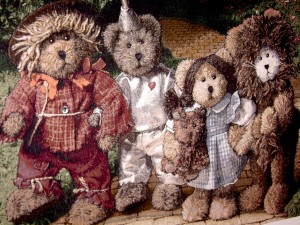 After the planning, designing, arranging, and equipping has been accomplished, we will quickly know if the environment we have created for the children is or is not working! Our observations of the children’s behavior will tell us what we need to do next, and whether we need to improve the environment, the materials, or the activities.
After the planning, designing, arranging, and equipping has been accomplished, we will quickly know if the environment we have created for the children is or is not working! Our observations of the children’s behavior will tell us what we need to do next, and whether we need to improve the environment, the materials, or the activities.
Here are a few questions to guide our observations:
How do children choose where they play?
- Which areas and materials are most popular? Which are rarely used?
- Do any children need help making choices?
- Are children able to find and return materials independently?
- Do the traffic patterns allow children to move easily about the room, play safely, and protect their work-in-progress?
How do children use the materials?
- Do they have the skills to use the materials successfully?
- Do they use the materials appropriately and creatively?
- Do they know how to care for the materials?
- Are there enough materials to keep children involved?
How do children interact with others?
- Are they able to play successfully near and with one another?
- Are any children isolated?
- Are children talking together about what they are doing?
- How do they ask for help from adults? From other children?
Once we have observed what is happening within the classroom space, we know very quickly whether or not there are problems that need to be addressed. Children’s behavior is a good indication of how the environment is working. Problem behaviors can typically be attributed to a few possible causes; more importantly, these problem behaviors usually disappear by making some minor changes to the environment. Here are a few examples:
- If children are running in the classroom, most likely there is too much open space. Perhaps the room is not divided into smaller areas, or perhaps the activity areas are not well defined. A strategy to correct the behavior would be to use shelves or other furniture and carpeting to carve the space into areas of interest, that is, interesting areas with open-ended materials just waiting to be discovered and used. Running out-of-doors is wonderful, but if we inadvertently create indoor runways for children, they will instinctively take off and use them!
- If children wander around the room, unable to choose activities, it could be that the room is too cluttered. Perhaps the children can’t focus. Or, perhaps the choices are not clear. Or, maybe there is not enough to do. A strategy would be to de-clutter the space. Simplify the layout of the room and the materials. Oftentimes, less is more when it comes to materials. Just choose the most interesting and engaging things to put out. Select items that can be used in many many creative ways! And possibly, add more choices from which the children can choose, and introduce them during morning circle with a choice tray, a choice board, or a visual poster.
- If children mis-use materials and resist clean-up, it could be that the materials on the shelves are messy. Or, perhaps the display of materials is not orderly. Or, maybe the children don’t know how to use the materials appropriately. A strategy would be to make a place for everything. Use picture labels (add words for preschoolers) to show where materials go. And provide consistent guidance on how to clean up. But, more importantly, when adding new materials to the room, introduce them to the children first – and show how these materials are to be used, and where they will be stored. Set the expectation up front.
As we gain experience and mastery over creating environments that work for both children and adults, we quickly know when something is amiss and correct it as soon as possible. We read the room in seconds; listen for anything louder than it should be; and then act.
I have learned that much of what happens in the course of our days (the good, the bad, and the ugly) has its beginnings in the environment. So, it behooves us to take a good look at our spaces every now and again. Yes, to evaluate.
So, how are your classrooms working?
I have spent a good deal of time consulting, coaching, and mentoring around this topic; troubleshooting for directors, and observing, finding the problem, and then strategizing possible solutions. If you would like a second set of eyes and ears to evaluate your classroom environments, let me know.
